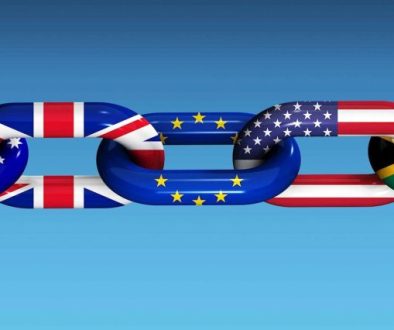With global problems varying between decrease in real incomes in advanced economies, a not very positive outlook for China, and the fears from the Russian-Ukrainian conflict, there is strong reason to worry that the post-pandemic recovery may convert to a recession. But there is still much that policymakers could do to mitigate the results.
Many investors voiced concerns about the outlook for financial markets due to the substantial uncertainties that they could pinpoint, and to other potential risks that were not yet clear. And by the beginning of March 2022, as the war between Russia and Ukraine started energy and food prices have spiked.
In parallel, central banks and specifically in western countries have reached a conclusion to drop the belief that today’s inflation is a just short-term phenomenon that would subside on its own. They are now intentionally tightening global financial conditions (by both unwinding their balance sheets and increasing interest rates), and this is adding to cyclical pressures on household incomes, and thus on the wider economy.
Adding salt to injury, China’s economy – the world’s second-largest and ten times bigger than Russia’s – has been purposely held back by the government’s “zero-COVID” strategy. And this comes on top of existing efforts to dampen excessive housing prices, reduce credit growth, and rein in business sectors.
This global economic status, is an indicator that a global recession could occur. If so, it will have been remarkably sudden, coming so soon after the lockdown-induced mini-recessions of 2020 and 2021. How bad will this downturn be, and are there policies that could avert it, or at least minimize its scale and severity?
In China, policymakers are concerned that a less tight stance on COVID-19 could increase contagions and overcome the country’s urban hospitals. Since such scenarios have already happened indeed in other countries – particularly in the United Kingdom, which was obliged to enforce sudden, strict lockdowns in 2020-21 – China can hardly be criticized for being generally cautious. But the evidence suggests that Omicron (the dominant global variant) is so transmissible that even lockdowns are unlikely to stop it completely. Moreover, it appears to be less virulent than previous variants, which makes a strict response harder to justify.
China’s blunt zero-COVID strategy comes on top of an already weak economy, so it has added to underlying cyclical weaknesses. The most recent trade data (for April) show that Chinese imports remain exceptionally low – just one of many signals pointing to a weak economy.
The problems facing China have implications extending beyond the economy and markets. China’s single-party leadership has long legitimized its rule by delivering ever-rising living standards for the country’s 1.4 billion people. But this implicit pact cannot easily be sustained under conditions of persistent economic weakness.
Having watched China for more than 30 years, I would say that one of its government’s biggest strengths has been its exceptionally good risk management. In the past, it has dealt with major potential problems decisively and in a timely manner. Not so today. If it doesn’t change course soon, there will be much more pain in store for its economy and for the rest of the world. On the other hand, if the government can abandon “zero-COVID” and some of its other more draconian economic crackdowns, growth could well rebound quickly.
As for the rest of the world, two major factors beyond China will determine how things play out: major central-bank policies and Vladimir Putin. The Russian president’s intentions remain as difficult to predict today as they were three months ago when he launched his invasion. Finland and Sweden’s sudden support for joining NATO shows that Putin has miscalculated abysmally. Though he might not end the war, his stupidity may well result in his removal from power (though many Kremlinologists consider this unlikely).
In any case, the blow to real incomes – and thus to consumer spending – from higher energy and food prices has been so large that central banks ought to think twice about their newfound hawkishness. After all, if the way to bring inflation under control is to weaken the economy, surging energy and food prices, together with tightening financial conditions, might have already done central banks’ job for them.
To be sure, if longer-term inflation expectations are rising and no longer anchored, that would change the calculation considerably. In the United States, where the Federal Reserve’s policy changes have far-reaching global effects, the latest Consumer Price Index shows core inflation still above 6%, with service-sector price inflation accelerating. As such, the Fed might see little reason to abandon the tightening path that it has so loudly hinted at.
But the Fed would do well to consider the reduction in real (inflation-adjusted) disposable incomes in the US. Though the decline hasn’t been as severe as in Europe, it has been significant, and the strong tightening of financial conditions may have already sown the seeds for an economic downturn soon.
So, are we heading into a global recession? Much will depend on the Fed, the Chinese leadership, and the erratic, isolated cipher in the Kremlin.



